Submitted by Pappal Suneja
Architectural Thesis Proposal: International Cruise Terminal at Cochin, India
India Architecture News - Sep 10, 2018 - 21:33 44889 views
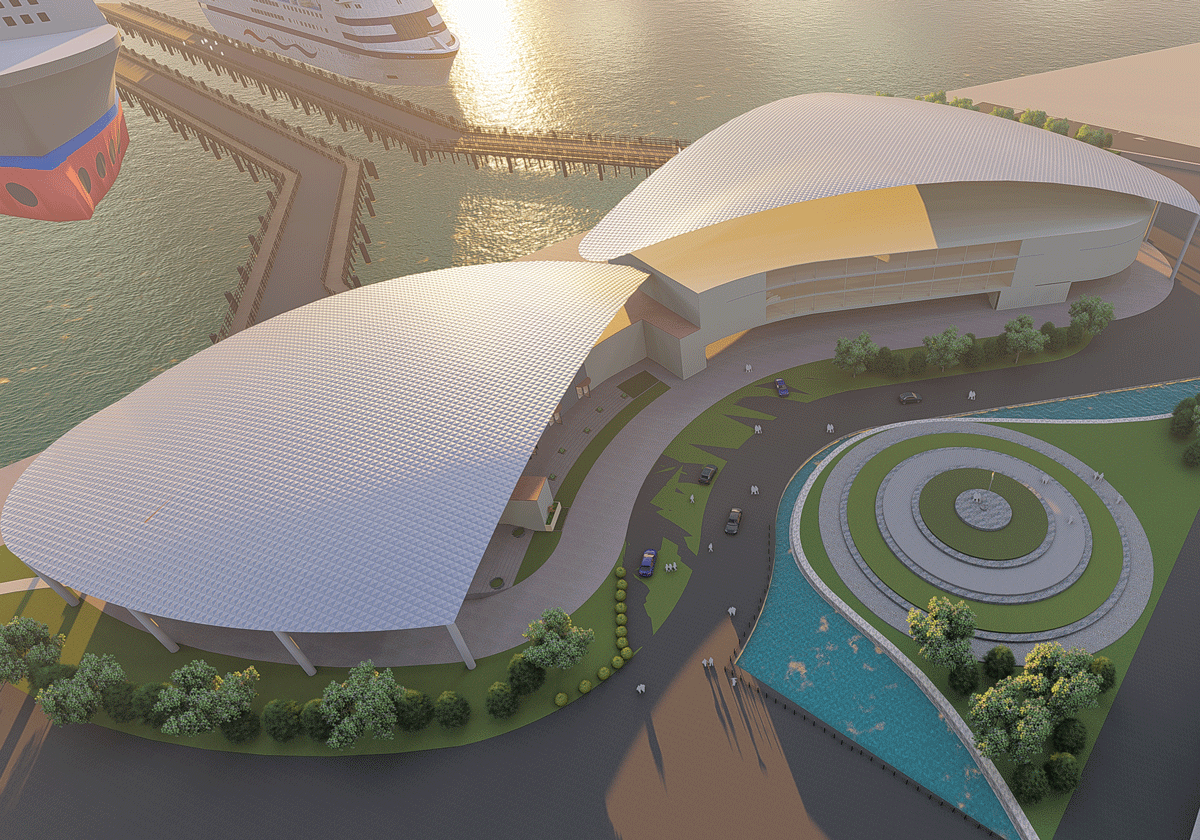
This is Synopsis of Architectural Thesis Proposal submitted to McGAN'S Ooty School of Architecture by Felishia Susan, under the able guidance of architect- Pappal Suneja. On an Introductory note, the Government of India has recognized Cruise Tourism as a potential area to build the economy of the country. It has initiated a number of positive measures to promote the cruise industry in order to position India as a global cruising destination. As a part of its development initiatives, it has identified the 5 major Indian ports of Mumbai, Goa, Cochin, Mangalore, and Chennai to be developed as “world class’’ cruise terminals.
The Proposal - Live Project
In view of this, the Central Government of India has proposed to build a cruise terminal in the scenic port of Cochin (Willingdon Island). Cochin is one of the leading cruising destinations in the country. With its strategic location and proximity to the international waterways, it has the potential to become the most preferred cruising destination globally. The Port Trust of Cochin has thus begun planning a project to build and develop a new 6.7-hectare International Cruise Terminal and public plaza to meet the increasing volume of foreign visitors.
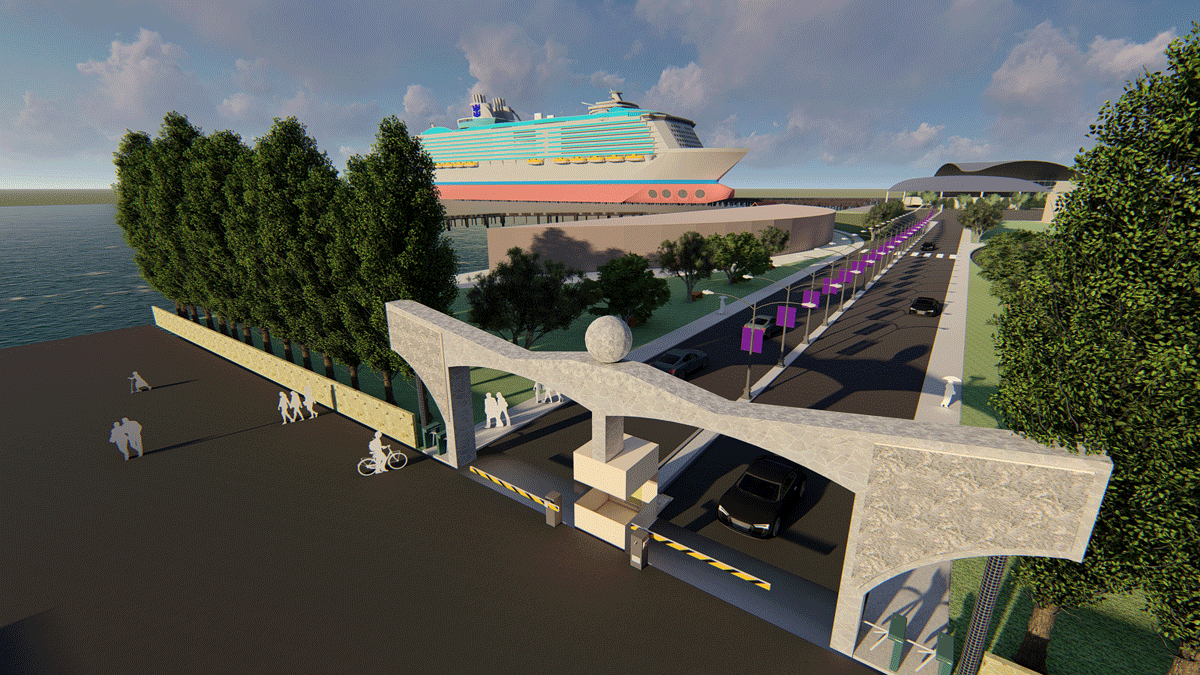
The Mission
This architectural thesis has been specially designed in view of the needs of the above proposal. The aim of the project is to comply with the design requirements of the government’s proposal and deliver an output that would befit the situation. The mission is to attract cruise traffic to the zone through architectural and structural analogies, incorporating climate responsive design strategies and the concept of energy efficient architecture to achieve the highest sustainability.
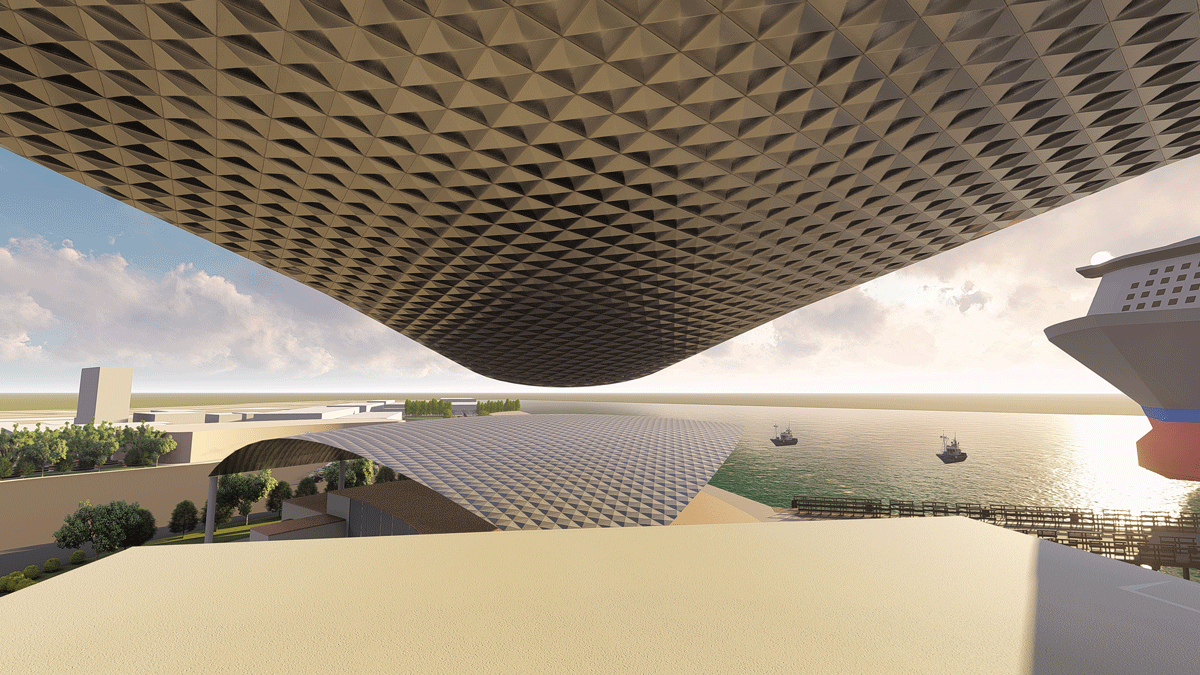
Design Outcome
This unique structure meets the design requirements of functionality, iconicity, accessibility, and sustainability as a single entity. It is a utopian, yet unassuming structure that coherently fits into its surroundings and skyline. The concept and organic design of plan and form are first of its kind in the cruise terminal industry, marking its distinctive character. The utopian design strategy will be a forerunner in the cruise terminal infrastructure development industry of the country in the years to come.
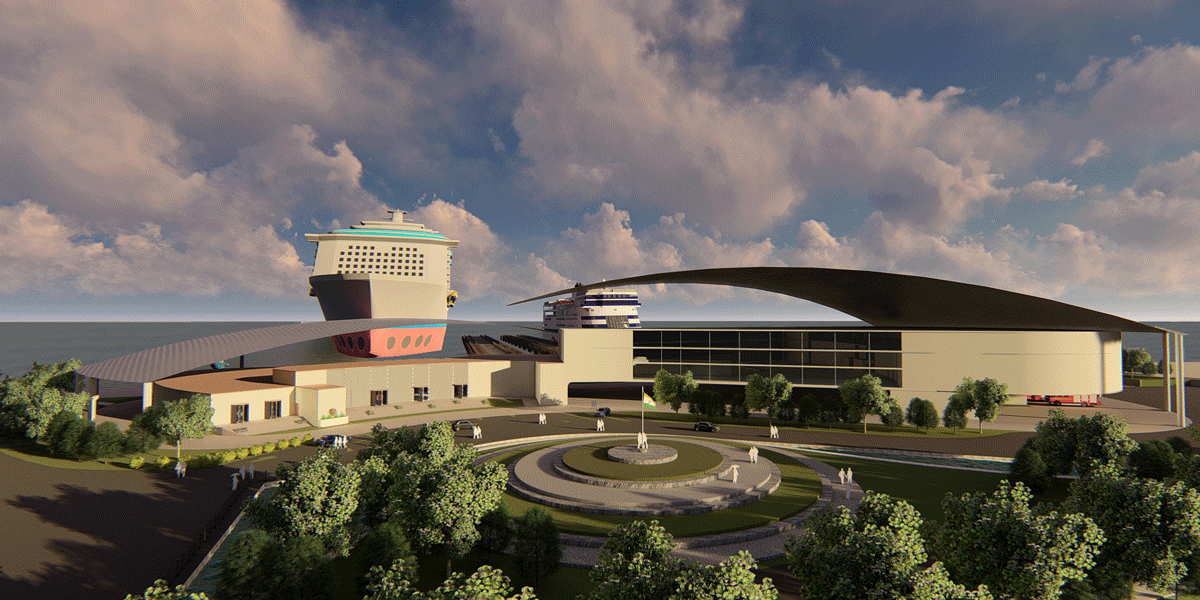
Concept
The architectural design of the structure responds to the functionality and its surroundings. Undulation is a functional concept derived from nature or rather present in nature in many hidden forms such as the rise and fall of sea waves. The formation of waves occurs in nature with the decrease in depth of water level, which is indicative of its relative closeness to the shore. Likely when a traveler, on a cruise, encounters a wave break it is indicative of having reached the shore. This instills in the travelers a sense of “home-coming”.
Hence, the concept of a wave break has been incorporated in form. The form of the building would thus create a sense of homecoming in the tourists and also display its functionality through its form. The wave can easily be associated with the sea and as a traveler on a cruise, approaching the shore, the pleasant sight of the structure would instantaneously reveal that it is a terminal facility. And as for the general public viewing it from ashore, it would create a sense of mysterious marvel and yet reveal that it is a cruise facility, through its abstractive form and its association to the sea.
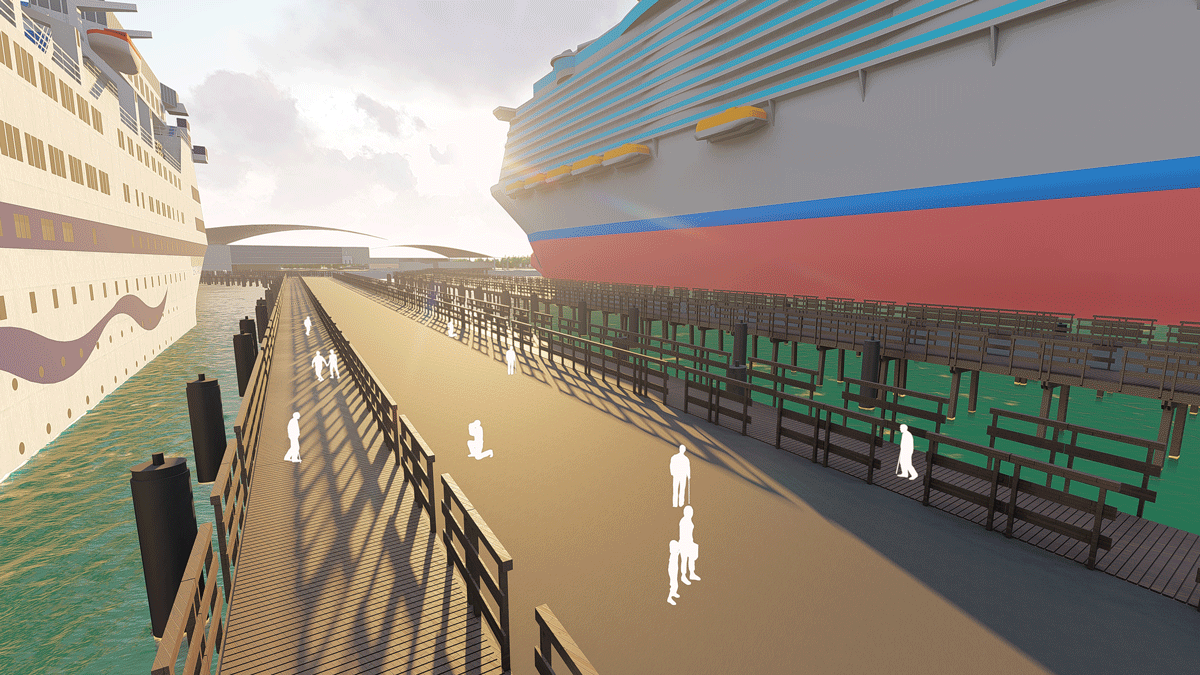
All Images © Felishia Susan
